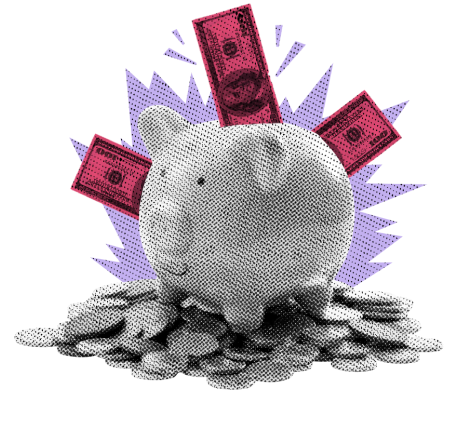Markets have a short memory—here’s a refresher on the 2018 trade war and what today’s news means.
KEY TAKEAWAYS
-
The 2018–2020 trade war with China lasted 664 days but saw markets gain over 25% overall.
-
We're currently only 131 days into a new “Trade Fight”—roughly 20% of the last trade war's duration.
-
Tariffs were reintroduced broadly, affecting more countries and sectors than in the previous round.
-
Overnight, a US-China framework deal was reached, but with no official sign-off or details.
-
The market is reacting cautiously, with futures pointing down despite the announcement.
MY HOT TAKES
-
Markets have short memories—and that’s not always a good thing.
-
Tariffs were completely predictable, yet somehow markets still got blindsided.
-
Comparing timelines is useful—if it took 664 days last time, we’ve got a long road ahead.
-
Rare-earths and AI chips are the power pieces in this new trade chess game.
-
A chart can cut through the noise better than 1,000 words of speculation. In other words, LOOK CLOSELY AT MY CHART 👀
-
You can quote me: “Markets would indeed be liberated—from gains.”
Hindsight is probably not 20-20. Take a few breaths and try to remember. Close your eyes, now think. The time is early 2018. There was a sophomore President in the White House, who a little over a year prior stunned the political establishment by winning the election. This was no ordinary President. This one was outspoken and was determined to try–let’s call them unconventional methods. Wall Street was watching closely.
The 2 years prior to that new President arrived in Washington, stocks essentially broke even and had an average year. Nothing to write home about. But everything would change. In 2017, the S&P 500 climbed by some 19% helped along by the Tax Cut and Jobs Act tax package. Though it was not ratified until late in the year, markets factored in its passage.
Politics aside, it looked like smooth sailing as 2018 began with an optimistic tilt. But then it happened. Blindsided. TARIFFS! Tariffs? Journalists, analysts, and even many economists scrambled to dig out their undergrad economics textbooks. “What does it all mean,” was the collective question. Confusion ensued. Political lines were drawn in the sand. The enemy was China. China, however, would not take it lying down, it fought back and a trade war ensued.
The first shot would be fired by the US on March 22, 2018 and it would be 664 calendar days before a Phase I deal would be signed on January 15th, 2020. The deal was announced in October of the prior year and markets rallied through mid-January. All told, the S&P500 would gain over 25% during the trade war. It was not a straight shot, though. There were setbacks which included a nearly -20% drawdown in Q4 of 2018 and three more notable single-digit drawdowns in 2019. It should be noted that the Fed started talking about cutting rates at the very end of 2018 and cut them three times in late 2019.
The future was looking bright in January of 2020. A benevolent Fed, a de-escalating trade war, and the possibility of an infrastructure deal. And then it happened. COVID. Fast-forward, we had almost-hyperinflation, a new President, an angry Fed, some minor bank failures, a few wars, stock and bond declines, a less-angry Fed, and now we got that other President back. This time it would be a turbocharged pro-market policy, and markets applauded. Since then, we got DOGE and its reachy promises, the President bought a Tesla, tried to buy Greenland, and had a messy breakup with Elon Musk.
Just a few days after the new President took office, it happened. We weren’t blind sided–we should not have been blindsided–this time around. The President all but promised tariffs during his campaign and even after he was elected. Perhaps the market wasn’t expecting them so soon, or maybe the magnitude was higher than hoped for, but you know what happened next.
We got so-called “liberation day,” and it became clear that markets would indeed be liberated–from gains. The President made it clear that this time around, things would be different, and the market got the message, erasing the Trump bump. Also, this time tariffs were being exacted on everyone, not just China, Canada, Mexico, and the EU, like last time. This was literally… everyone. Just when we thought it couldn’t get even worse, the administration began to negotiate.
All this happened since those days in March of 2018. That is a lot to remember, isn’t it? That is probably why you forgot a few details. Last night WHILE YOU SLEPT the administration announced that it reached an agreement with China after several days of intense negotiating in the UK. Of course, it has not been signed off on by Trump nor Xi, but trade reps have created a framework. Details? Nope, not yet, which probably explains why futures are pointing to a lower close.
Now, I have been quite vocal in these newsletters/blog posts/videos (yes I do daily videos on instagram), in the press, and on all the financial networks that the last Chinese trade negotiations took upward of 600 days to conclude. Actually, 664 to be exact. Through today, the US and China have been grappling for some 131 days. On the table? Everything, but most likely rare-earth elements and AI chips. Not saying underwear and car parts are not on this list, but those are likely lower on the list. Why? Because rare-earths are China’s strongest hand and US-developed AI chips are the US’s strong hand. If these issues can get resolved early, it is quite possible that items 3-3000 can get resolved as well… at some point. So, can a deal get reached? Will it hold? Will those other items get resolved in the near term? Will tariffs and counter-tariffs go away? Even more importantly, how will the market react in the days, months, and–dare I say–years ahead? I woke up this morning and was determined to give you something interesting to ponder, so I set to work on creating a chart–one chart to put all this in perspective for you. This was created using my favorite R-programming language and GGPLOT2 using close data from my besties at Yahoo Finance (happy to share code). And here it is. Check it out, and follow me to the close.

This chart shows a timeline of the S&P 500 in days. It includes the 2018/2019 Trade War (red line black annotations) and the current–what I call “Trade Fight” (green line blue annotations). I have also labeled some of the more important events. What you should take away from this chart is a) just how long it took to reach a settlement the first time around, b) including this morning’s announcement that we are only 19.73% through what it took to get through the first time, and finally c) the markets not only weathered the Trade War, but it returned nearly 25% during it. Oh, there were some bumps along the way. There you go, now it is clear, isn’t it? A picture is, indeed, worth 1,000 words. Or in this case, 1,014… but who's counting.
YESTERDAY’S MARKETS
Stocks gained yesterday in a later-session surge after trading sideways on a day chock-full of NO REAL DATA WHATSOEVER. We heard that trade negotiations were going well, small business optimism improved, a treasury auction DID NOT FAIL, leaving stocks to follow the current… well, current which seems to be up. 10-year yields watched from the sidelines, unchanged ahead of an auction later today.


.png)

